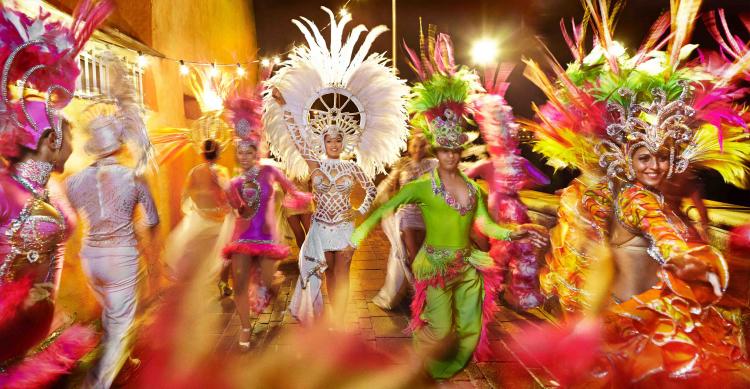
- English
- Español
Carnival brings high occupancy rates to Canary Islands capitals

- The British, Italians and Germans, the foreigners most attracted by the Canary Islands' carnivals
The popularity of Canarian carnivals has brought the hotels of the two capitals of the Canary Islands to over 90 percent occupancy during the weeks of one of the most important and highly representative festivals hosted by the archipelago, according to a research of hotel rates and availability published in Spanish by the hotel search engine Trivago.
In Las Palmas de Gran Canaria, few hotels are showing available rooms via Internet because average occupancy has risen from 89 to 93 percent compared to 2016. Establishments offering accommodations in the city which do show availability – just 5 percent – maintain their rates during the days of the event, with an overnight stay in the Gran Canaria during carnival costing an average of 127 euros.
The users who have performed the most searches on this website to find accommodations in the city were Swedes, Spaniards, Britons, Germans, Italians and Norwegians. Of them, the tourists who stay the longest are the British, with an average of 2.76 days and an average budget of 129 euros per night. The Swedes, however, are the visitors who spend the least per night (95 euros) and they limit their stay in the capital to one day.
Santa Cruz de Tenerife, on the other hand, has seen hotels rates climb because of carnival, and staying in the capital during the festival this year means spending 130 euros, three percent more than in the same period last year. Nonetheless, occupancy remains above 90 percent.
By country of origin, the tourists most interested in visiting carnival in the capital of Tenerife come from other parts of Spain, the United Kingdom, Italy and Germany. According to the website, the searches by these users reveal that the British are also the visitors who will spend the most time in the city, 2.6 days on average, and that Spaniards are willing to pay the most for accommodation, an average of 150 euros.
Both cities are major attractions for tourists who seek in these destinations the fun that characterises this festival, which is known as “the carnival of carnivals” for its showiness. During this lively celebration, not only the capitals but all seven islands in the Canarian archipelago explode with colour and excitement with the spectacular elections for the carnival queens and the processions and floats which parade in the streets to the beat of Latin music, spreading joy with the spirited enthusiasm of their participants. The streets and squares are taken over by outdoor dances, day and night, for people to enjoy a party where a costume is practically mandatory.









 Volver
Volver